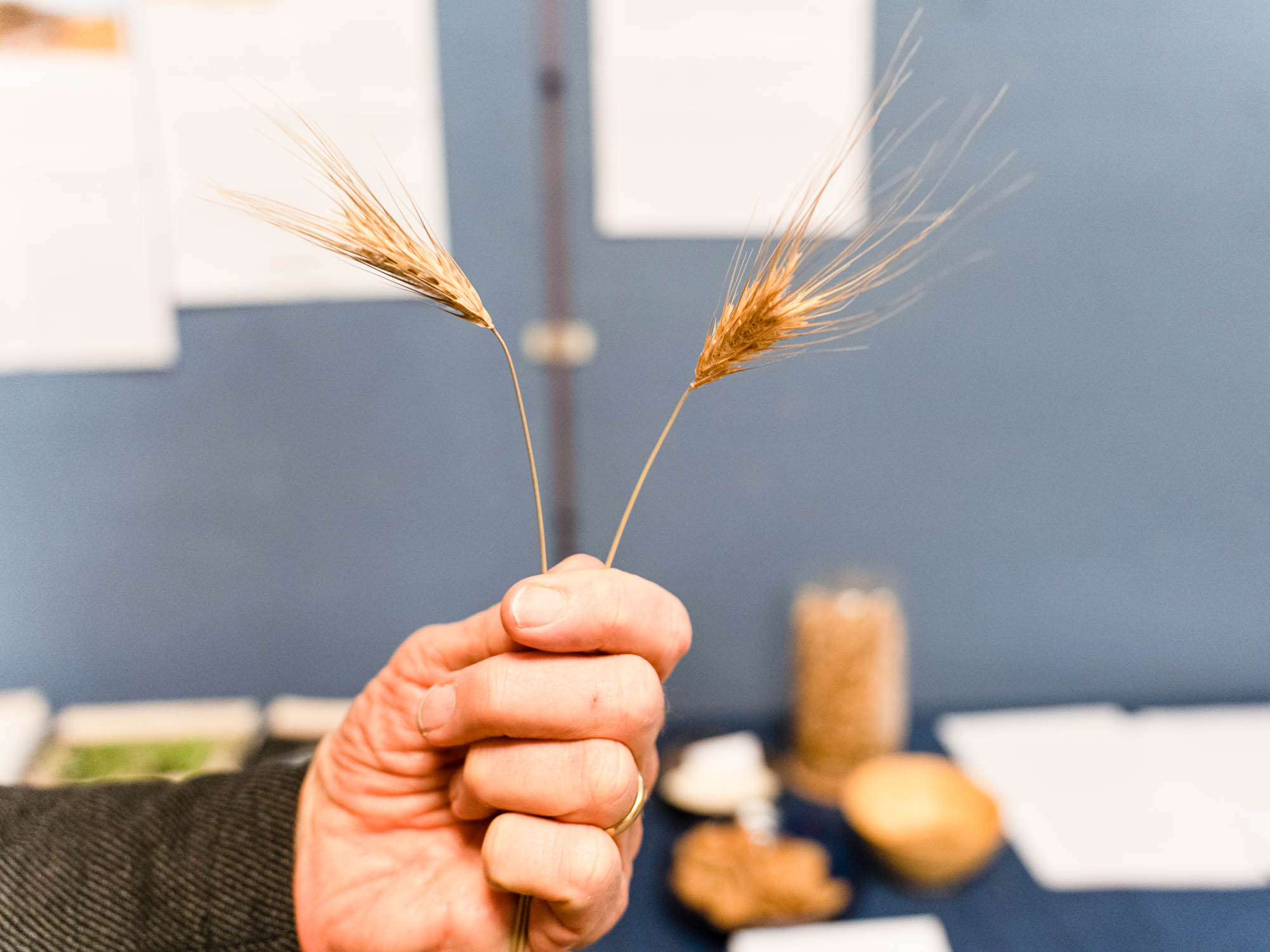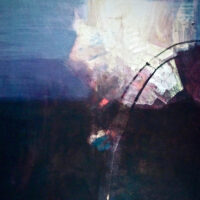Four small portraits of participants in the Agricultural Conference this February. Questions asked by Charlie Cross.

Jan Moser – A Young Winemaker from Austria
I’m a winemaker living in Austria, but originally coming from the Czech Republic. I’m also working for the Demeter Office in the Czech Republic and Slovakia. I first studied finance, and I used to work as a financial auditor, but when I turned 30, I just didn’t feel like I was doing what I was meant to do. I mean, I had everything set up — I had my job. I had my wife to be, I had my car and my flat and everything, but I was just not sure if that was all life was meant to be, you know? And I always wanted to travel, so I just left everything behind and flew to New Zealand. I travelled for many years, and ended up working seasonally at different wineries around the world. In 2012, I was in South America, where I saw my first Biodynamic farm and I heard about Steiner for the first time. It was super fascinating. I didn’t know anything about him before. I read ‹the Essential Steiner›, and then I found a website called RudolfSteinerAudio.com, which I still like to listen to when I’m working. Now, I work on a farm with 51 hectares of vineyards. It’s a winery in Austria that’s been Biodynamic for something like 22 years and Demeter certified for 18 years. I’ve become the cellar master of the winery.
You’re both a young person and in the field of Biodynamics. How are you feeling about the future?
That case is that that’s a very, very difficult topic. If you’re looking around, it’s easy to see that change is so, so visible in every single area. To be honest, I had a phase when I was really scared of the future. It might sound lame, but again, it was Steiner that helped me there. I was at the Members Assembly of the Biodynamic Federation in Chile in November last year, and we were reading a short quote, where Steiner is just talking about the inevitability of change and about how we should not have any fear at all of the future itself. I know it sounds easy, but it’s changed me.
But – I see Biodynamics as a future for humankind that we can really start working with. And the Biodynamic movement can go bigger and bigger. I see the difference it can make firsthand. As a cellar master, I don’t need to do anything with the wines anymore. I mean, I press it, I rack it, and it’s fermenting by itself. I’m only controlling it – I’m not making anything happen. It’s a huge difference from what I did, for example, in New Zealand, where we had a recipe for every day of the fermentation process, putting different things in. Now, we just taste – we taste every day. And based on the tasting, we make decisions. We are also working a lot with the Maria Thun calendar. We look for fruit of flower days to work with the wines. You can produce without using chemicals in the vineyard and the cellar itself, making a stable product with a high quality. This is mind-blowing to me. I really like it.

Peerachote Charanwong – «Sam»
About twenty years ago, I started an organic business. I am a food technologist. I run agricultural production and food factory processing. We also have a coconut farm. 20, 25 years back, we started organic. I had been told about Biodynamics along the way, but I never got a chance to really get into it until a workshop in 2016. As a scientist, when I first heard the story and principles of Biodynamics, I said to myself. «Are you guys kidding me?» It took a few years in order to see that these things are real and to get into Biodynamics properly. Now, my operation is the first integrated producer/processor to get Demeter Certification in Southeast Asia.
Coincidently, in 2015, one year before I attended that first workshop, I got a piece of land, about 13 hectares. I intended to use it as my retirement home. I was born as a city boy and grew up working in the factory, and at the end of my life, I thought that I’d build up my last home so I can die on a farm. But that piece of land was formerly a sand mine. So you can imagine, nothing was left there. We had to start everything from scratch. In the beginning, there was only one tree. And now we are full of trees, and then some spice and vegetable plots. So thanks to Biodynamics, I was inspired to and able to turn this dead soil into an agricultural area.
Can you tell us about Biodynamics in relation to the agricultural culture that you grew up in?
That is a very good question. Biodynamics has something in common with Thai indigenous agriculture. You know that in Biodynamics we start with what Rudolf Steiner taught us, but it was developed in part by Maria Thun with the Biodynamic Calendar. In Thai indigenous agricultural knowledge, we grow plants in correspondence to the moon cycle. And it has come to my mind that we are all under the same sky, no matter if we are in Asia, we are in the US, if we are in the Northern Hemisphere, or in the South. Back in the old days, there was no television, there was no Internet. So when it comes to the dark, everybody’s looking into the sky and they see the movement of the sky, and they try to make some relationship with what they do during the daytime. So in every culture, it is very surprising that they have the belief in growing things in accordance with the cycle of the sky. In Thailand, we also grow by the high tide, low tide, full moon, dark moon, descending moon, and ascending moon. But it’s not as complicated as the Biodynamic calendar by Maria Thun, which covers the movement of the planets through the constellations as well.

Will Bratton of the International Biodynamic Guild.
I’ve been fascinated with Biodynamics for about 12 years now. In that time, I’ve always been looking at pictures of the Goetheanum, so now I’m having this Mecca-light feeling about coming to visit for the 99th Biodynamic Conference. I’ve met so many interesting people from around the world, and the caliber of the lectures has been also very impressive.
My career — my trade — is in medicinal botanicals products. I’ve worked for companies in the United States like Gaia Herbs and now Traditional Medicinals. I purchase large volumes of medicinal botanicals around the world. I also grew up on a ranch in the center of Texas producing cattle and mohair from Angora goats, and we would use the Farmer’s Almanac for everything. All the simple things – when to go fishing and things like that, but also for beef production. I didn’t know it as a child, but they would never schedule de-horning on head days because they said it produced too much blood and it could be dangerous for the cattle.
You also run the International Biodynamic Guild!
Yes! There are three pillars. The first is to increase access to the actual prep materials — people getting bladders, skulls, different sheaths, and botanicals, and then going through the process of making the preps themselves. We’re disconnected from the raw parts of life today. It’s often that folks might get a little bag or vial with the finished prep in it, but I feel it’s important to put your hands on the actual, unprocessed material and go through the ritual. I think that’s incredibly important to further Biodynamics, to increase intimacy with it.
The second pillar is the astronomical-astrological calendaring work. We’re working on a virtual or digital platform that would hopefully create a condition where we might foster more Lili Koliskos and Maria Thuns, using modern technology — our smartphones for our actual location in space with stars and planetary bodies. I’m really excited for the future astronomical-astrological calendaring aspect of Biodynamics — the experimental work that finds new truths about our relationship to the cosmos. And then the third pillar is just interviews with people that might have ideas to share that will have an impact on other people, that will carry Biodynamics forward. You can find more about that here.

Rapha Arcanjo – Farmer-Artist
I work with Art. I started at the conservatory as a musician when I was thirteen, but in my twenties, I decided to leave university and the urban lifestyle to get deep in nature, so I was in the Amazon with indigenous folk. I travelled the whole of South America hitchhiking, getting in touch with isolated tribes and peoples and shamans and healing people. Since then, I decided to change my life, to live in nature. I went to a Biodynamic community farm, where I could integrate both worlds, taking art courses and volunteering on the farm. Then, after one year, I was invited as a partner in the business, and I took responsibility for making the preparations and had a sort of graduation, starting to teach about Biodynamics.
And after three years, I decided to move back to my little town, Michael, named after the archangel. There, my family has a nature park which is in homage to an uncle who was persecuted and killed, and tortured by the dictatorship in Sao Paulo in Brazil in the sixties. He was a young boy, 24 years old, fighting for justice. 30 years later my family received money from the government – $1,050, with which we bought 500 hectares of wild forest. It’s very wild, with tigers, monkeys, hundred- and thousand-year-old trees, and big waterfalls. Just 2% remains from the original Atlantic rainforest in southeast Brazil.
So I went back there and bought land near the forest and started a Biodynamic farm, called UOAEI, after the five vowels, which is a mantra from the Tupi-Guarani, the indigenous people from that zone. The farm is a place to experiment, to change, to exchange, to make encounters. Volunteers experiment, we have projects with kids, bees, and horses. We have different types of experiences with permaculture and different approaches to nature. There is a beautiful lake, a lot of pure water, and our house is open to receive everybody — gypsies, people that don’t have anywhere to live, and people from Waldorf Schools, and we hold festivals there. So we are a family. Our house is open to receive everybody.
All portraits by Charles Cross, title image by Xue Li






Perhaps a closer engagement with Denis Klochek in Sacramento would be useful as Denis has acquired a vast knowledge of BD practices in dry semi desert climates in the foothills of the sierras. I often wonder why the extensive development of BD practices around the planet are not more widely shared ?